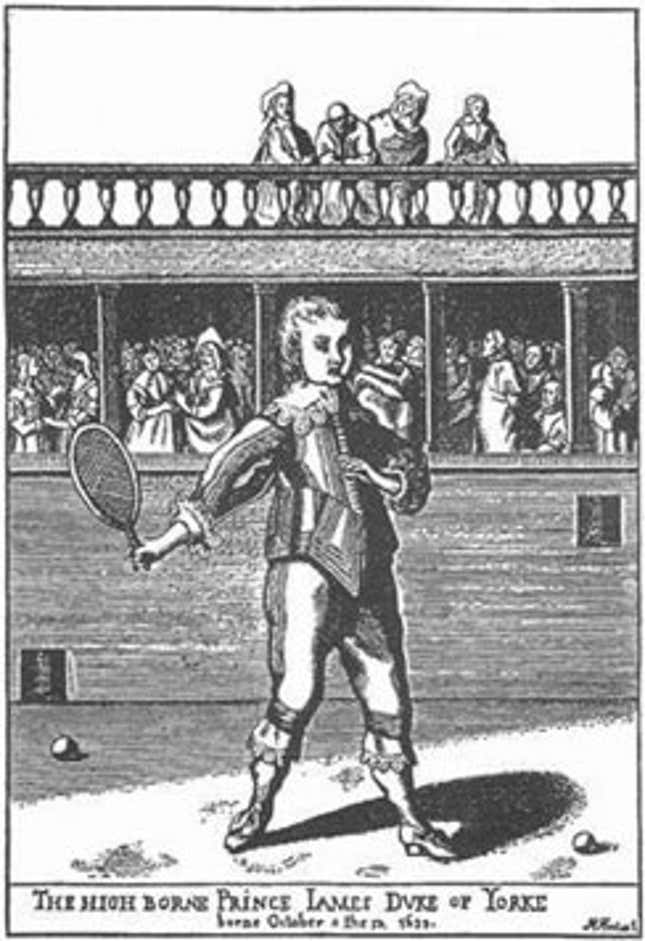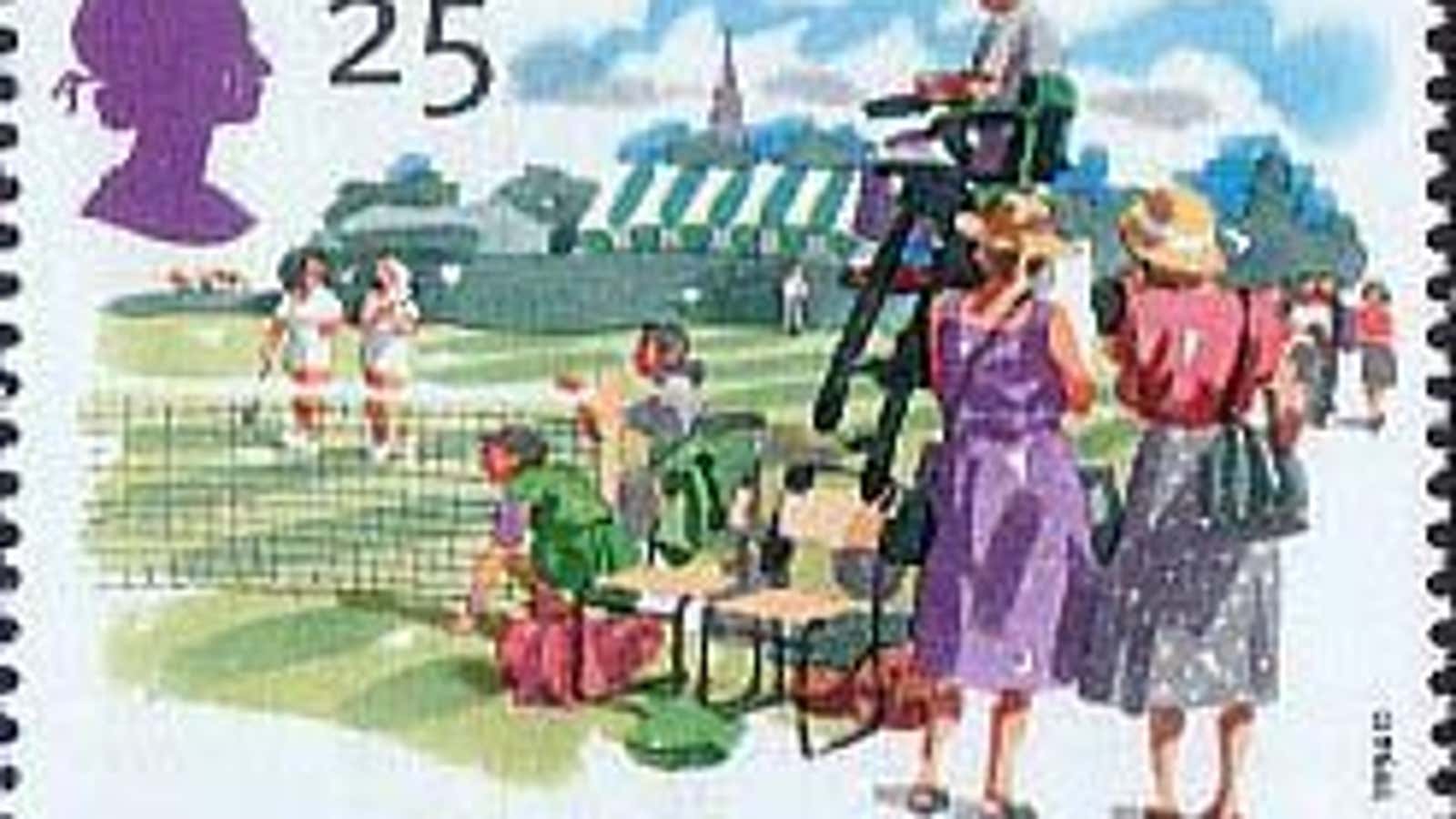The first tennis players would not recognize the sport played today at the annual Wimbledon championship in London. They were cloistered, 12th-century French monks living in monasteries, hitting balls between them with the palms of their hands.
The monastic handball was, in French, called jeu de paume, or “game of the palm” and is believed to have been picked up from the Romans. Thanks in great part to Wimbledon, tennis seems British to the world. Yet credit for the word “tennis” goes to those first French monks swatting balls with their palms. The terminology evolved from tenez, the French imperative for “take.” This expression used long ago to start a point in jeu de paume.
The game was taken up by European royalty, and was something of an extreme sport—sport historians report that it even killed a couple of French kings. The French king Louis X, who reigned in the 14th century, died of a chill right after a fierce handball match. Charles the VIII, a 15th-century French king, died after hitting his head on a wooden beam at the entrance to his court.
Nonetheless, love for the game didn’t abate—there were 250 courts in Paris in the 16th century. That is, until Louis XIV, who reigned in France from 1643 to 1715, proved to be no good. The fashionable game-of-choice in France then became billiards.
Other Europeans went on playing jeu de paume enthusiastically and the game evolved. Fifteenth century Italians are credited with adding strings made of animal guts to the leather mitt that until then had been the standard palm protection for jeu de paume. By the 1500s, the stringed glove was in wide use. Soon after, a short handle was added to the handball gear, making a racket.
Thus was born a version of the game the British call “real tennis.” (In the US, this game goes by the name “court tennis,” and in Australia it’s called “royal tennis.”) It’s an elaborate indoor sport with lots of rules, played on a long, narrow court, with two players on either side of a net. The fashion for real tennis faded in the 1700s, however, and didn’t come back for a century. In 1850, a development to the ball used in real tennis eventually spawned “lawn tennis” in England.

Leather balls were traded for a new kind of rubber ball created in 1850 by Charles Goodyear, of Goodyear Tires fame. That meant people could bounce a ball on a lawn and the sport could move outdoors. A simpler sport, known in England as “lawn tennis” (and eventually, to most of the world, simply “tennis”), was about to take hold.
The first patent for a game involving a stringed wooden racket and specific lawn court were filed in England in 1874 by Major Walter C. Wingfield. He called the game Sphairistike, Greek for “playing at ball.” Wingfield’s court was designed hourglass-shaped and smaller than the modern court.
By 1877, today’s rectangular court and current rules of tennis became finalized. That was also the year of the first Wimbledon competition, initially held as a one-time affair to raise money for repairs at a private club, then called the All England Club Croquet. The club later changed its name to the All England Croquet and Lawn Tennis Club.
Only 22 men played at that first tournament in 1877, wearing hats and heeled shoes, in a singles-match competition. Women began competing at Wimbledon in 1884 after lobbying for inclusion. Two hundred people attended that initial event in 1877. They paid a shilling to watch Spencer Gore take the inaugural championship. Tickets for seats at this year’s games ran from €400 to €5,850 euros ($455-$6,675) on Stubhub.
